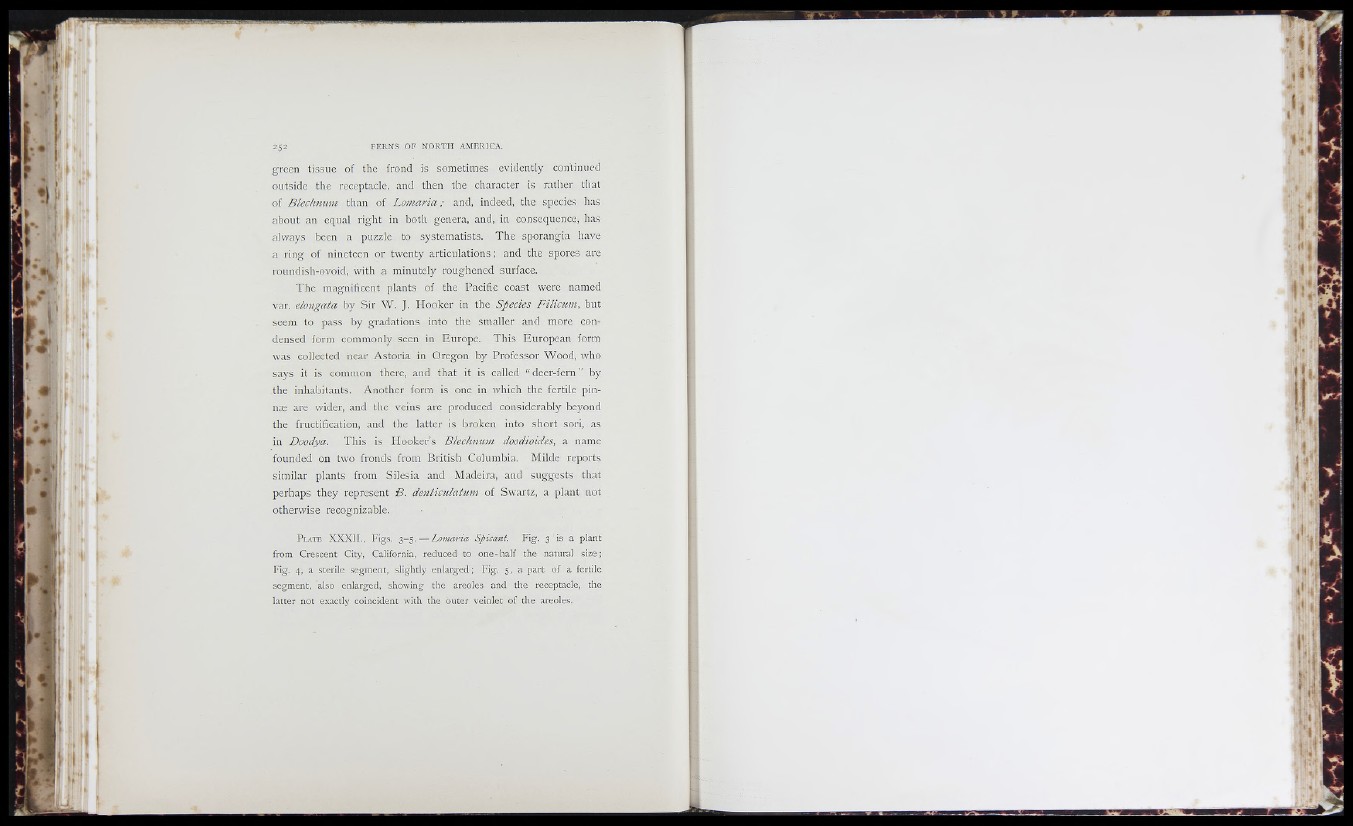
r 'I
• ,1
I» )
i»*
I».
1 %
I» .
Ir p
H
\
I »
’ ' i
iîlii
Il *
V
FERNS OF NORTH AMERICA.
green tissue of the frond is sometimes evidently continued
outside the receptacle, and then the character is rather that
of Blechnum than of L om a ria ; and, indeed, the specie.s has
about an equal right in both genera, and, in consequence, lias
always been a puzzle to systematists. The sporangia have
a ring of nineteen or twenty articulations ; and the spores are
roundish-ovoid, with a minutely roughened surface.
The magnificent plants of the Pacific coast were named
var. elongala by Sir W. J. Hooker in the Species Filicum, but
seem to pass by gradations into the smaller and more condensed
form commonly seen in Europe. This European form
was collected near Astoria in Oregon by Professor Wood, who
says it is common there, and that it is called “ deer-fern ” by
the inhabitants. Another form is one in which the fertile pinnæ
are wider, and the veins are produced considerably beyond
the fructification, and the latter is broken into short sori, as
in Doodya. This is Hooker’s Blechizum doodioides, a name
founded on two fronds from British Columbia. Milde reports
similar plants from Silesia and Madeira, and suggests that
perhaps they represent B . denliculalum of Swartz, a plant not
otherwise recognizable.
Pi_\TE X X X IL , Figs. 3-5. — Lomaria Spicant. Fig. 3 is a plant
from Crescent City, California, reduced to one-half the natural size;
Fig. 4, a sterile segment, slightly enlarged; Fig. 5, a part of a fertile
segment, also enlarged, showing the areoles and the receptacle, the
latter not exactly coincident with the outer veinlet of the areoles.
M
» c
ri